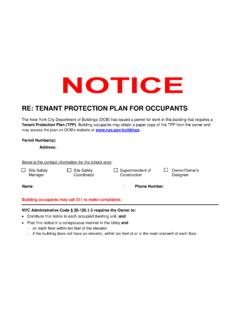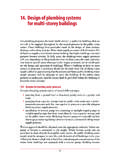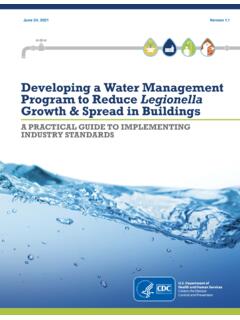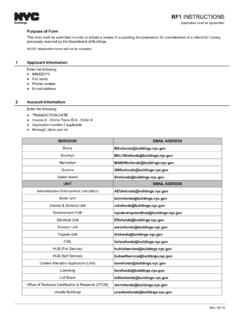Transcription of EN - ec.europa.eu
1 EN EN EUROPEAN COMMISSION Brussels, COM(2021) 802 final 2021/0426 (COD) Proposal for a DIRECTIVE OF THE EUROPEAN PARLIAMENT AND OF THE COUNCIL on the energy performance of buildings (recast) (Text with EEA relevance) {SEC(2021) 430 final} - {SWD(2021) 453 final} - {SWD(2021) 454 final} EN 1 EN EXPLANATORY MEMORANDUM 1. CONTEXT OF THE PROPOSAL Reasons for and objectives of the proposal The revision of the Energy Performance of Buildings Directive (EPBD) is part of the 2021 Commission Work Programme Fit for 55 package and complements the other components of the package proposed in July 20211, setting the vision for achieving a zero-emission building stock by 2050. As already indicated in the Climate Action Plan2, it is a key legislative instrument to deliver on the 2030 and 2050 decarbonisation objectives.
2 It follows up on key components of the three focus areas3 of the Renovation Wave Strategy4, including the intention to propose mandatory minimum energy performance standards, following an impact assessment looking at their scope, timeline, phasing in and accompanying support policies. Given the need for appropriate consultation and impact assessment processes, the proposed revision could only come slightly later than the first set of Fit for 55 initiatives adopted in July 2021. The proposal is particularly important because buildings account for 40% of energy consumed and 36% of energy-related direct and indirect greenhouse gas emissions. In the EU, heating, cooling and domestic hot water account for 80% of the energy that households consume.
3 Making Europe more resilient calls for renovation of EU buildings, making them more energy efficient and less dependent on fossil fuels. Renovation is key for reducing the energy consumption of buildings, for bringing down emissions and for reducing energy bills. In addition, renovation generates local jobs and economic growth. Given the long lead-in time required to induce changes in the building sector, a timely revision of the Directive is needed to support achieving the Fit for 55 objectives. Interplay Fit for 55 package and notably the new ETS The Fit for 55 package consists of a set of inter-connected proposals backed by impact assessment analysis taking this into account. The analysis5 showed that an over-reliance on strengthened regulatory policies would lead to unnecessarily high economic burdens, while carbon pricing alone would not overcome persistent market failures and non-economic barriers.
4 The chosen policy mix therefore carefully balances pricing, targets, standards and support measures. The proposed EPBD revision is set within the same frame. As a consequence, a change in the balance of the overall mix would call for adjusting different parts of policy. A weakening in pricing and targets measures fostering the decarbonisation of the building sector would call for correspondingly more stringent regulatory measures in the EPBD revision, most notably with regard to fossil fuel phase out and mandatory minimum energy performance standards. The relevant Commission s impact assessments have shown that the achievement of targets would be less certain and more costly in the absence of a carbon price signal on heating fuels, such as the proposed new emissions trading system (ETS) for buildings and road transport.
5 This works best hand in hand with EU regulatory measures and complementary national 1 2 Climate Target Plan: Stepping up Europe s 2030 climate ambition Investing in a climate-neutral future for the benefit of our people, COM/2020/562 final 3 Tackling energy poverty and worst-performing buildings; public buildings and social infrastructure showing the way; and decarbonising heating and cooling. 4 A Renovation Wave for Europe - greening our buildings, creating jobs, improving lives 5 :52021DC0550&from=EN EN 2 EN measures, as incentivised by the proposed higher ambition in the Effort Sharing Regulation (ESR), the Energy Efficiency Directive (EED) and the Renewable Energy Directive (RED). The new ETS creates economic incentives for building decarbonisation and generates revenues for public support, targeted in particular to support vulnerable households.
6 The revised EPBD addresses non-economic barriers to renovation6. It creates an enabling framework to provide financial support to renovation without directly mobilizing the required funding. A revised EPBD could contribute significantly to achieving the 2030 objectives. The EPBD Impact Assessment7 shows that, in its absence, the overall emission reductions needed will fall short by roughly half of what is needed in the residential and services sector to achieve the 2030 goal. Without these revisions, more measures at Member State level would be necessary to make up for this gap, but uncertainty around their effectiveness, timeliness and consistency with the 2050 decarbonisation objective enshrined in the European Climate Law8 would dull incentives for a rapid scale up in renovation rates.
7 In the absence of strengthened EU or national regulatory measures boosting the rate of renovations, carbon price would need to be higher9 and ultimately non-economic barriers to renovations would remain unaddressed. It will be important to preserve consistency across all building -related provisions in the package during negotiations to agree on a coherent and robust framework for buildings to meet the EU s 2030 and 2050 targets. Issues around vulnerability, affordability and energy poverty A main novelty of the revision is the introduction of minimum energy performance standards to trigger the required transformation of the sector. building renovation has two widely recognised positive economic impacts: 1. decreasing energy costs, alleviating energy poverty, and 2.
8 Increasing the value of more energy performing buildings. Other benefits include better quality of living and shorter average vacancy periods. The benefits of lower energy bills are even more relevant in a context of high energy prices. People living in worst-performing buildings and those facing energy poverty would benefit from renovated and better buildings and from reduced energy costs, and be buffered from further market price increases and volatility. On the other hand, landlords may be tempted to pass renovation costs to tenants to cover for their upfront investment. Also, a more pronounced focus on addressing the shortcomings of existing worst-performing buildings could reduce further their prices in market transactions, even if a certain correlation between energy performance classes and value already exists today.
9 6 Directing renovation towards the buildings with the highest potential and the highest structural barriers of risk aversion, split incentives and co-ownership structures and to stimulate the more complex deeper renovations. 7 SWD (2021) 453, Commission Staff Working Document, Impact Assessment Report, Accompanying the document, Directive of the European Parliament and of the Council on the energy performance of buildings (recast) 8 Regulation of the European Parliament and of the Council establishing the framework for achieving climate neutrality and amending Regulations (EC) No 401/2009 and (EU) 2018/1999 ( European Climate Law ) ( ) 9 See the MIX-CP scenario underpinning the ETS Impact Assessment.
10 EN 3 EN EU-wide minimum energy performance standards have been carefully designed to mitigate possible negative social effects and maximise their social benefits, notably as regards improving living conditions in worst-performing buildings and alleviating or even preventing energy poverty. Member States will be required to support compliance with minimum energy performance standards with an adequate support framework that includes financial support, technical assistance, removal of barriers and monitoring of social impacts, in particular on the most vulnerable. National building renovation plans will pay attention to monitoring the reduction of people affected by energy poverty and of population living in inadequate housing ( leaking walls or roofs) or with inadequate thermal comfort conditions.
















